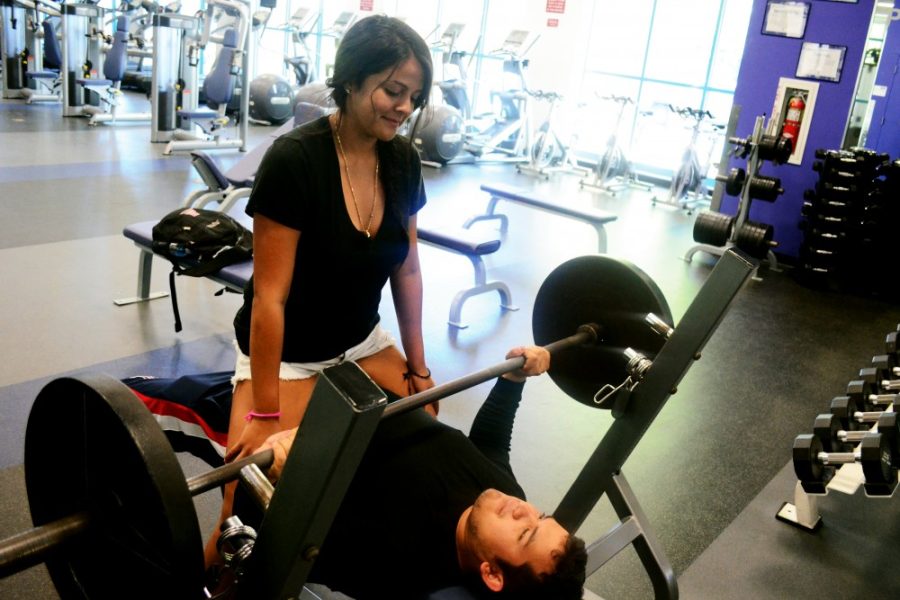UA students are putting an Internet meme to the test as part of an evidence-based medicine class.
The meme claims that, according to a study, having a woman on a man’s lap while he bench presses will allow him to perform more repetitions due to an increase in testosterone levels, which supports strength and muscle growth over time.
“This meme has been floating around the Internet for a while,” said Austin McEvoy, a journalism senior and former employee of the Daily Wildcat. “I looked for the study on PubMed and the data does not exist, so we decided to test it ourselves.”
In addition to testing the meme, the project is intended to help students to understand how experiments work. McEvoy’s group had to decide on the appropriate controls, proper design and general practical considerations for the experiment.
“This class is all about learning how to use the scientific method in medicine and in ordinary life,” said Joanna Masel, an associate professor in the department of ecology and evolutionary biology and the instructor of the course. “The key to the scientific method is reproducibility.”
This is an area where researchers still sometimes struggle today.
Conducted in 1996, one of the most famous priming psychology studies reported that thinking about intelligence-related concepts such as “professor” would influence individuals’ test scores beneficially compared to thinking about a concept unrelated to intelligence, like “football hooligan.” However, the results of the experiments have not been replicable. In April 2013, a study published in PLOS ONE, showed that nine separate experiments were unable to reproduce the results of the 1996 study.
Type I errors, meaning false positives, can lead to future experiments being built on faulty foundations, said Joe Watkins, a professor in the department of mathematics and the chair of the graduate interdisciplinary program in statistics. When a type I error is made and published, subsequent researchers will often build on those results, without testing their validity.
How can scientists work towards fixing this problem? First, effective study design needs to be understood and valued.
“We need to conduct experiments in a way that make our answers reliable,” said Parris Humphrey, a graduate student in the department of EEB and the teaching assistant for the course.
For their experiment, the student researchers randomly selected men at the UA Campus Recreation Center to perform two trials. Each man performed a control trial with no woman, and a trial with a woman sitting on their lap. The team then compared the number of reps done in each trial.
After 20 trial sets, 70 percent of the men did better with the woman on their lap, 15 percent did worse and 15 percent showed no change. The students are still performing statistical analysis to determine if the results are significant.
Watkins, who teaches an undergraduate course in statistical methods, emphasized the importance of incorporating good statistics in a study.
“You have to have the imagination,” Watkins said, “and you have to have the technical skills to pull it off.”









